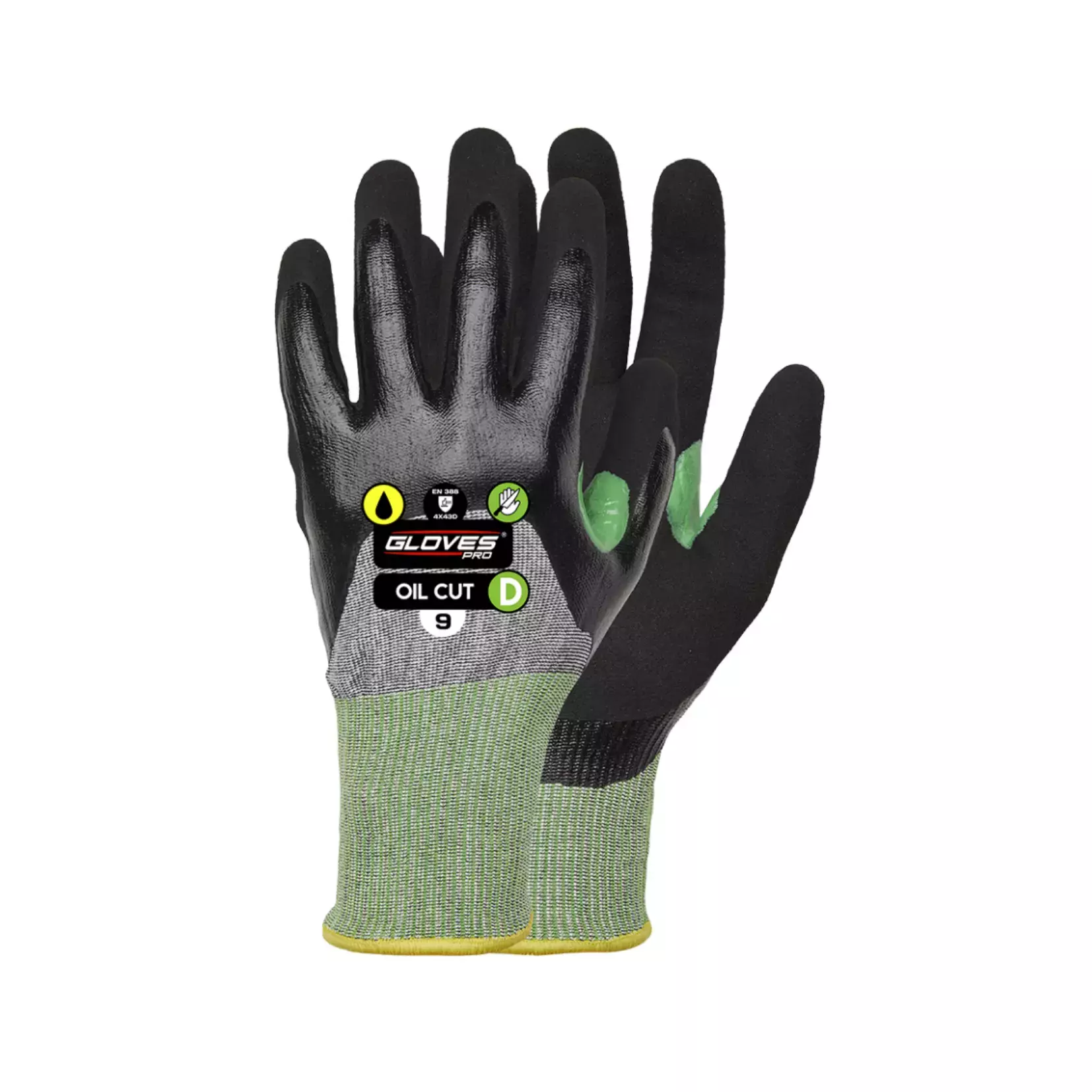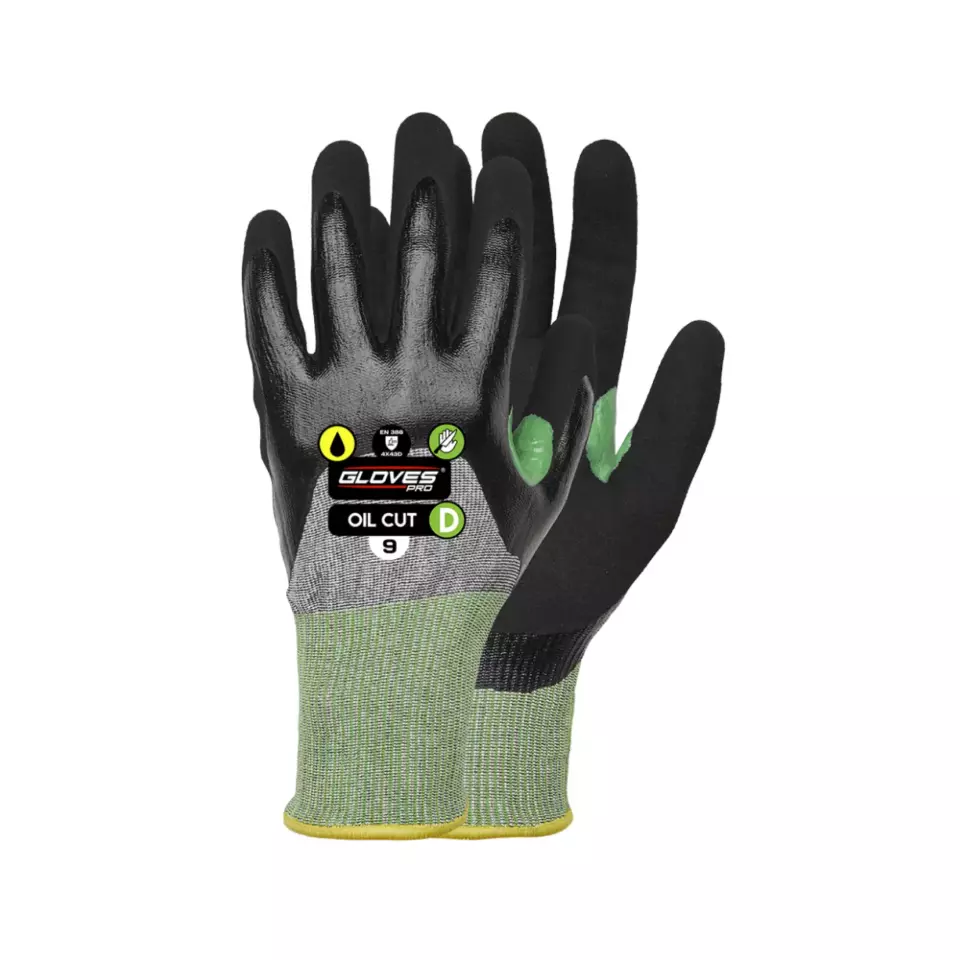
Features You'll Love

Coating Material · Nitrile, Nitrile foam
EN 388 · Puncture Resistance Level 3, Cut Resistance, ISO 13997 Level D, Abrasion Resistance Level 4
Support · Reinforced Thumb Crotch
Withstands strong pressure from sharp objects like nails or thick splinters.
Offers strong protection against cuts from utility knives, glass edges, and sheet metal.
Offers the highest level of protection against intense rubbing and wear from rough materials.
Identifies areas of the glove with additional reinforcement for enhanced protection and durability in high-wear zones.
Gloves Pro
Oil Resistant Cut Protection Gloves D, 12 pairs
Oil Resistant Cut Protection Gloves D, 12 pairs
4.6 / 5
153,63 €
Price per 12 pairs
12,80 € / pair
Choose size
Free delivery
Features You'll Love

Coating Material · Nitrile, Nitrile foam
EN 388 · Puncture Resistance Level 3, Cut Resistance, ISO 13997 Level D, Abrasion Resistance Level 4
Support · Reinforced Thumb Crotch
Withstands strong pressure from sharp objects like nails or thick splinters.
Offers strong protection against cuts from utility knives, glass edges, and sheet metal.
Offers the highest level of protection against intense rubbing and wear from rough materials.
Identifies areas of the glove with additional reinforcement for enhanced protection and durability in high-wear zones.
Product description
Gloves Pro Oil Cut D double coated cut resistant gloves, 12 pairs per pack.
Cut series oil resistant cut resistant gloves, class D. The glove has a flexible, oil-proof coating made of nitrile. An additional coating of foamed nitrile provides good grip even in wet and greasy conditions. Very good durability.